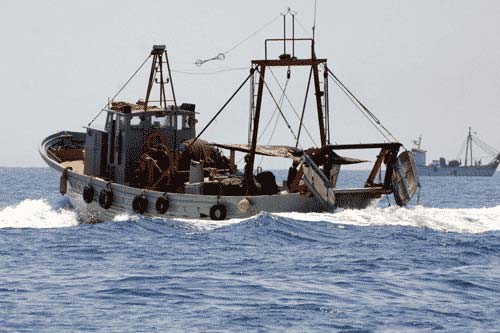World’s fisheries could follow new Australian strategy
Canberra, Australia, 11 September 2007—A new strategy for setting catch levels will help ensure the long term economic and environmental sustainability in Australia’s Commonwealth-managed fisheries

The Commonwealth Fisheries Harvest Strategy was drawn up following recognition that better management of fish stocks is needed to rebuild overfished stocks and prevent others becoming overfished in Australian waters.
It draws on some existing elements of fisheries management, but sets targets and limits to fishing catches in a precautionary way. This fundamental strategy brings together in one package a framework to deal with the management of species that are at all levels of our knowledge base.
“TRAFFIC welcomes the new strategy and the guidelines for its implementation,” said Glenn Sant, TRAFFIC’s Global Marine Programme Leader.
“TRAFFIC sees real scope for the strategy to be used as a model in fisheries worldwide,” Glenn Sant, TRAFFIC’s Global Marine Programme Leader
“Gathering fisheries information is time-consuming and expensive, but this strategy is all about setting precautionary catch limits based on what information you do have to hand—as more information becomes available, it allows fisheries managers to decide if the catch quota should be changed,” he explained.
“We consider frameworks for management as essential if you are going to have well managed fisheries that are timely, objective in their decision making and deliver sustainably managed fisheries.
“This makes the strategy’s guidelines widely applicable—TRAFFIC sees real scope for it to be used as a model in fisheries worldwide.
“The strategy is certain to be of interest to bodies like the United Nations Food and Agriculture Organization.”
The Commonwealth Fisheries Harvest Strategy was launched by Australian Minister for Fisheries and Conservation, Senator Eric Abetz.
“This strategy is a key element of the Australian Government’s $220 million Securing Our Fishing Future package, announced in November 2005,” said Senator Abetz.
“The policy aims to maximise the net economic returns to the Australian community from the harvest of Commonwealth fish stocks, while at the same time maintaining stocks at safe and productive levels.”
Australia’s Exclusive Economic Zone (EEZ) is bigger than its landmass. It is the world’s third largest, behind those of France and the USA. The area between 3 nautical miles to 200 nautical miles offshore is the responsibility of the Commonwealth Government of Australia; nearshore waters are managed by the nation’s 7 coastal states and territories.
The Commonwealth Fisheries Harvest Strategy Policy and Guidelines for Implementation documents are available at www.daff.gov.au/harveststrategypolicy.
For more information on the adoption of management frameworks in Regional Fisheries Management Organizations (RFMOs), see TRAFFIC’s 2006 report: Follow the Leader: Learning from experience and best practice in regional fisheries management organizations



